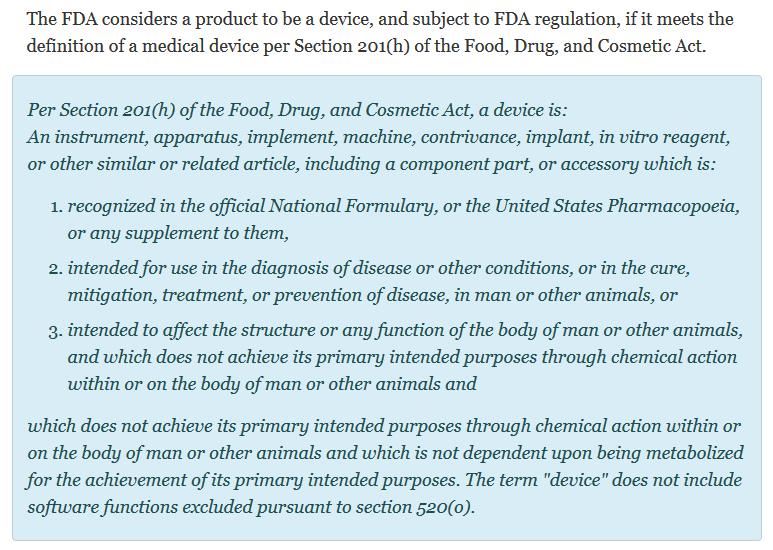It may come as a surprise to some, but our consumer subdermal microchip implants in humans - that is to say that microchips which fit neatly into the fibrous fascia tissue connecting your skin to your muscles - are not categorized as medical devices by the FDA. In fact, they should be considered in the same category as body piercing jewelry, which is also not regulated by the FDA.
What actually constitutes a medical device by the FDA?
It’s very clearly spelled out here on the FDA website; How to Determine if Your Product is a Medical Device | FDA
Let’s break down these 3 tenets of Section 201(h) one by one;
-
From a medical device perspective, the National Formulary and United States Pharmacopoeia cover drugs and drugs administering or drug eluting devices. These are things like hypodermic needles or devices which slowly release drugs into the body like some implantable birth controls devices do.
-
Basically, when it comes to RFID transponders as implants, the most relevant use case that applies to provision 2 are as follows; is the device used by doctors or medical professionals to do anything with the patient from identify in the practice management system to recording medical data on it or within an electronic medical records system which is tied in some way to the device.
-
Is the device a bone splint or joint replacement or a breast implant? In short, is it something that is intended to change how the body moves, looks, or otherwise carries out any of its functions.
So how do our products look when held up to this list?
-
Our products are not listed or recognized in the official National Formulary or the United States Pharmacopoeia.
-
Our products are not used in the diagnosis, prevention, or treatment of any disease or condition. The important thing to understand here is that the device’s use case matters here. Is it possible to link a chip implant with a doctor’s practice management system or medical records system to identify the patient and bring up their records? Absolutely. Is that the intent of the devices we sell, and do we make available software or extended functionality to perform this linkage, or support in any way the connecting of our transponder products to medical systems? No we do not. Because of this, our products are not considered applicable under provision 2, even though essentially the same exact implantable transponder product was released for this purpose (patient identity) by VeriChip and received FDA approval in 2004 for this purpose.
-
Our products are not intended to affect the structure or function of the body and does not achieve its primary intended purpose through chemical action. Furthermore, they are not placed into deep tissues of the body, they literally sit skin deep and do not interact with the body in any way.
In short, our implantable transponder products are fancy body jewelry products, and are actually safer to place under the skin than getting a typical body piercing which must hang through two open wounds for several days, dramatically increasing the risk of infection and keloid scaring.
